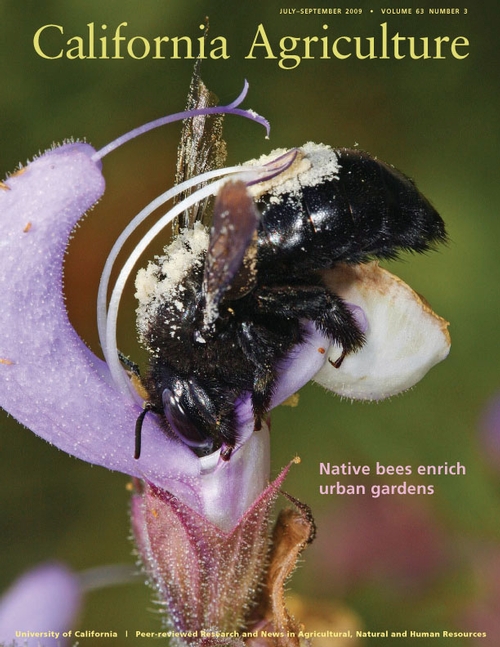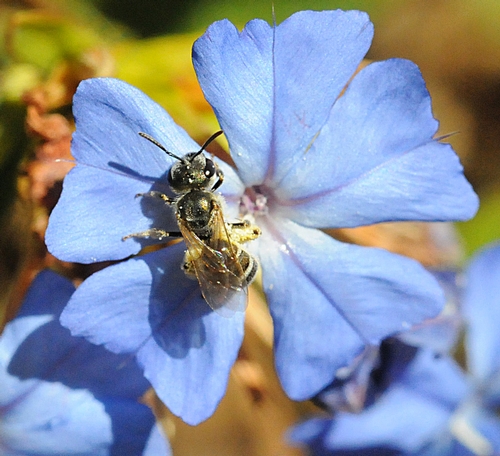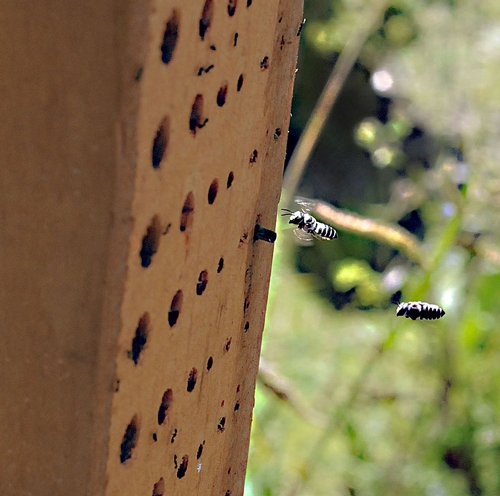Posts Tagged: native pollinators
The Importance of Pollinators
It's a brief appearance but the message is important. Pollination ecologist Neal Williams, assistant professor of entomology at UC Davis, appears briefly in a segment on native pollinators produced by America's Heartland. The show is now airing...

Pollination ecologist Neal Williams of UC Davis with native bees. (Photo by Kathy Keatley Garvey)
A Salute to California Agriculture
Do you recognize the native bee that graces the cover of the current edition of California Agriculture, a peer-reviewed journal published by the UC Division of...

California Agriculture
Wild Bees: Alternative Pollinators
Scientists have long been studying alternative pollinators, especially with the decline of the honey bee...

Sweat bee

Bee condo
Build It And They Will Come
Build it and they will come. Baseball's “Field of Dreams?” No, a bee nesting block. Think "bee condo." It's an artificial nesting site made of wood and drilled with different-sized holes and depths to accommodate the diversity of...

This is a bee nesting block built to attract native pollinators. (Photo by Kathy Keatley Garvey)

A female leafcutting bee heads for the bee nesting block. The holes are of different diameters and depths to attract a greater diversity of native bees.(Photo by Kathy Keatley Garvey)

Leafcutter bees are just a few of the native bees that use a bee nesting block. The block faces the morning sun so that bees can warm themselves up to flight temperature. (Photo by Kathy Keatley Garvey)

